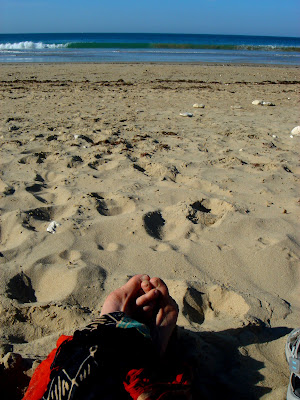
It's really only now that I begin to grasp the extent of the confusion engendered by going to art college at the age of 16. For many years, the only sense I could make of it all was my critique of the contemporary art scene. Something was wrong with them, it seemed; with the culture of enforced abstraction (St Martins School of Art, London, 1975); the mandatory eight foot canvases; the disdain for the illustrative, the decorative, and the representational.
But now I can see that, even if I hadn't been an emotionally disturbed teenager who had just left an unhappy home, at 16 you have a very shakey sense of self. And without some degree of robustness in terms of this base, you're likely to be hopelessly adrift when it comes to this creative lark.
When I say 'sense of self', I'm not arguing for any kind of core, essential being that is waiting there to be discovered.
Sense of self is emergent; constantly creating itself in the face of daily challenges, biological urges, and emotional imperatives. You have to have this constant process of self-knitting in order to stay sane; in order to make it from one day to the next, from one year to another. And I think you need to it to make paintings. Or play music. Without it, you're not only likely to be derivative, and to focus on the perfection of technique without having any sense of what you're going to
do with the technique, but you're going to be lost in a much greater sense. You're not going to know how to find your own voice, or how to find confidence in such a voice. You're also not going to be able to withstand the force of the very powerful influences that everywhere are pushing in upon you, not least from an educational instutition, whose very purpose is to exert these pressures upon you.
At 16, I studied the history of 20th century art. Well, I can't say I studied it - I had no idea how to study - but I did attend the lectures, look at the pictures, and even read a book or two. And some of it got through. I could see what was happening, how things were evolving, what Cezanne was reacting to, why the Impressionists painted in little bits of paint. Finally, I remember, we got to a Russian guy called Malevitch. He was continuing the evolution away from the constrictions imposed on painting as it was taught in the academies, and in the end he painted a painting that was called something like 'white square on a white ground'. I haven't been back to check this, but my memory, 34 years later, tells me that this was seen as end of painting. A logical evolution, arriving at the blank canvas. I don't have any idea what the discussions have been since then, but something about this logical arrival at the blank canvas made perfect sense to me. And that, combined with the art fashions of the time (as represented by what my tutors said to me and the culture of in/out of the life room etc) somehow combined to freeze me out of any capacity for work. Perhaps it was because I was only 16, and it took it all too literally (on the other hand, I have a friend who has just put herself through art college in her late fifties, having been a painter all of her life, and the experience seems to have had precisely the same effect...).
All this has come back to me because about ten days ago I went to the public library and found myself getting out books on Kandinsky, Miro, printers and printing, illustrators and illustrating. Kandinsky pulled me in like a warm, deep forest. A place of safety, a treasure chest. But we were going on holiday, and the book was far too big to put in my suitcase. So I took a book that has been sitting on my shelves for longer than I can remember, which I've never read, and which I assumed was dry, meaningless and academic. It's called 'Theories of Modern Art', by Herschel Chipp, published in 1968.
When I got to the beach, I opened it up. The forest rolled out in front of me like a new land. Theories? Dry academic stuff? The book is a collection of what they said, themselves. Cezanne, Van Gogh, Gauguin, Munch, Redon, Kandinsky, Nolde.... The questions they asked themselves, the answers they gave to their critics, their purposes and intentions, vexed questions concerning nature, the world, and the imagination. And I saw that their dilemmas are exactly the same as mine. It isn't a question of it all 'being wrong' in the contemporary art world. I'm simply standing on the huge open plain that they argued and worked into being, free of the constraints that they had to push so hard against. Trying to turn the tanker of my own 32 years of confusion, yes; almost crushed by the inertia of my own 25 years of inactivity, yes. But, fundamentally, in an unbelievably privileged place. Which I ought to try to learn to make use of, especially now that I'm somewhat past the age of 16.....





